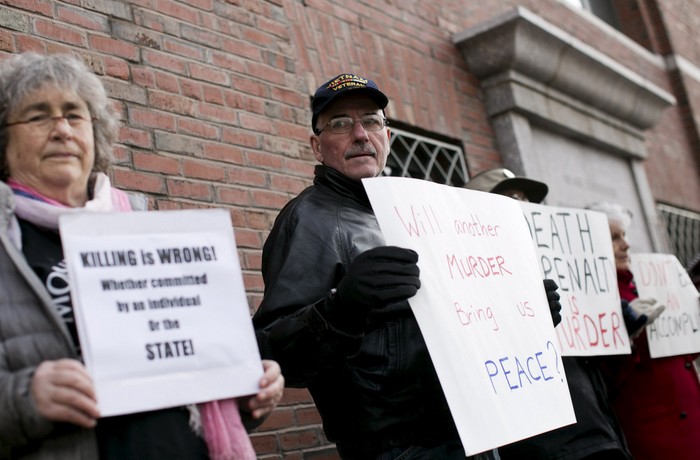
NZ Herald 5 January 2018
Family First Comment: Superb commentary from Dr Paul Moon… “One of the arguments in the 20th century that convinced many people of the error of executions was that occasionally, mistakes were made in judging someone guilty, and when it came to the death penalty, one mistake was one mistake too many. Recent overseas examples of people suffering from mental illness who have sought a termination of their lives (and been granted their wish by the medical profession), only to have a last-minute change of heart, shows that the risk of error when it comes to euthanasia is very real. Do we still hold to the view that one mistake is one too many? New Zealand finally dispensed with the death penalty because when knee-jerk emotional instincts were set aside, the moral, social, and ethical arguments against legal killings proved overwhelming. It will be a test to see if the country retains that perspective as the advocates of euthanasia push for what would amount to a reversal of this enlightened trajectory.”
www.protect.org.nz – Make a submission today!
Dr Paul Moon is Professor of History at Auckland University of Technology.
Even as the noose was being placed around Walter Boulton’s neck on February 18, 1957, New Zealanders were growing increasingly uncomfortable with the notion of capital punishment. It was a sentiment no doubt strengthened by reports that instead of Boulton’s neck snapping immediately, he was left in agony while the rope slowly strangled him to death. In 1961, on the back of growing public opinion which saw the state sanction of killing as unenlightened, Parliament abolished the death penalty (except for the crime of treason, for which the option of execution remained until 1989, when this exemption was also removed).
It is useful to reflect on the progress of death penalty abolitionists in New Zealand in the 20th century, and while it might be simplistic to transpose all their arguments to the current euthanasia debate, there are some significant themes that apply in both areas. During a 1941 parliamentary debate on the death penalty, the Attorney General and Minister of Justice, Rex Mason, described the state’s right to administer the death penalty as uncivilised and “backward”. Four years later, another Labour MP emphasised New Zealand’s reputation as a “progressive country” when arguing against capital punishment.
As concerns over the morality of the state killing certain categories of its citizens mounted, abolitionists pointed out that the death penalty had detrimental psychological effects on those administering it. The testimony of some of those present at these killings highlighted the cold-bloodedness of the process, and the effects it left on them for life. One prison psychologist wrote of the feeling of “complete revulsion” at witnessing someone having their life terminated, despite the fact that the law had warranted it. Every execution needed an executioner, and those who took on that role also became victims in a way.
Death penalty proponents, on the other hand, responded by suggesting that a life spent in prison could be worse than the death penalty, and that while people might oppose the state killing the worst of its criminals, it was sometimes a “practical” undertaking — a means of protecting society from the worst of its underbelly. However, by the 1950s, such “rational” arguments were increasingly crashing into the reality of society ending the lives of some of its members. The fact that prohibitions on public executions had long been in force was the giveaway clue that while the principle might have made sense, the practice of legally approved killings remained as abhorrent as ever.
How the liberal worm has turned since. The same arguments used by progressives for the abolition of the death penalty in the 20th century have been misappropriated by those advocating for a new age of state-sanctioned killing — this time wrapped up in the euphemism of euthanasia, or the even more morbidly saccharine and utterly misleading “death with dignity”. In cases of euthanasia, it may be a doctor rather than a hangman carrying out the killing, but there is no reason to think the psychological effects on those involved in euthanasia will be any less severe, or that the fragile value we place on human life will not again be degraded. And the principle of the state giving permission for lives to be terminated on the basis of their being “worthy” and “unworthy” applies to both areas. The distinction is only that in capital punishment cases, death was the consequence of the state deeming that the life of a person (usually a murderer) was not worth continuing, while in euthanasia, it is the state backing the individual’s determination that their own life no longer has worth for physical or psychological reasons.
One of the arguments in the 20th century that convinced many people of the error of executions was that occasionally, mistakes were made in judging someone guilty, and when it came to the death penalty, one mistake was one mistake too many. Recent overseas examples of people suffering from mental illness who have sought a termination of their lives (and been granted their wish by the medical profession), only to have a last-minute change of heart, shows that the risk of error when it comes to euthanasia is very real. Do we still hold to the view that one mistake is one too many? New Zealand finally dispensed with the death penalty because when knee-jerk emotional instincts were set aside, the moral, social, and ethical arguments against legal killings proved overwhelming. It will be a test to see if the country retains that perspective as the advocates of euthanasia push for what would amount to a reversal of this enlightened trajectory.


